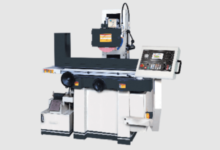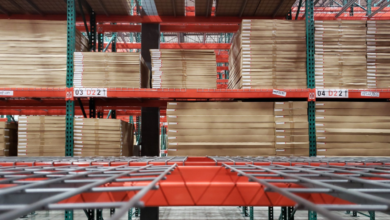what are current mortgage rates

Table of Contents
Understanding Today’s Mortgage Rate Environment
Understanding the current mortgage rate environment is key for anyone looking to buy a home or refinance. It’s not just about picking a number; it’s about grasping the forces that shape those numbers. The canada prime rate plays a big role, acting as a baseline for many borrowing costs. Think of it like the starting point for a race – everything else builds from there.
Several things influence where mortgage rates land on any given day. It’s a bit like a recipe with many ingredients:
- Economic Indicators: Things like inflation reports, job numbers, and overall economic growth are closely watched. If the economy is booming, rates might go up. If it’s slowing down, they might come down.
- Bank of Canada’s Policy: The Bank of Canada sets its own key interest rate, which directly impacts the canada prime rate. When they adjust their rate, mortgage rates usually follow suit.
- Market Sentiment: Sometimes, even just what people think might happen can move rates. If lenders anticipate future rate hikes, they might adjust their current offerings.
It’s a complex picture, and trying to track it all can be a headache. That’s where resources like Frank Mortgage can help. They can simplify things and even connect you with an online mortgage broker who understands these market dynamics. You might even find a gds tds calculator useful to get a rough idea of what you might qualify for, though it’s always best to get a personalized quote.
The mortgage market can feel like a moving target. Rates can shift based on global events, domestic economic news, and even lender-specific strategies. Staying informed is half the battle, and having a good partner can make a big difference in finding the right mortgage for your situation.
Navigating Fixed vs. Variable Mortgage Options
Choosing between a fixed-rate and a variable-rate mortgage is a big decision for any homeowner. It really comes down to what you’re comfortable with and what you think might happen with interest rates. Frank Mortgage can help you sort through these options.
Predictability of Fixed-Rate Mortgages
With a fixed-rate mortgage, your interest rate stays the same for the entire term of the loan. This means your principal and interest payment will never change. It’s like having a budget that’s set in stone, which can be really comforting if you like knowing exactly what your expenses will be each month. You don’t have to worry about market fluctuations affecting your payment. It’s a straightforward approach, and many people find that peace of mind worth it, even if the initial rate might be a little higher than a variable option.
Potential Savings with Variable Rates
Variable-rate mortgages, on the other hand, have interest rates that can go up or down based on market conditions. They are often tied to the canada prime rate. The upside is that if rates fall, your mortgage payment could decrease, saving you money. It’s a bit of a gamble, but if you’re looking to potentially pay less over the life of the loan, especially if you think rates will drop or stay low, this could be the way to go. You might even find a better starting rate compared to a fixed option. It’s worth checking out a gds tds calculator to see potential payment differences.
The Role of the Canada Prime Rate in Variable Mortgages
The canada prime rate is a big deal for variable-rate mortgages. Lenders typically set their variable rates as a percentage below or above the prime rate. So, when the Bank of Canada adjusts the prime rate, your variable mortgage rate usually adjusts right along with it. This direct link means changes in the prime rate have an immediate impact on your monthly payments. If the prime rate goes up, your payment goes up. If it goes down, your payment goes down. It’s why people who choose variable rates often keep a close eye on economic news and Bank of Canada announcements. Sometimes, working with an online mortgage broker can help you understand these movements better and find competitive variable rates.
When considering variable rates, it’s important to think about your personal financial situation and how a potential increase in your mortgage payment might affect your budget. Even a small increase can add up over time.
Key Economic Drivers of Mortgage Pricing
When you’re looking at mortgage rates, a few big economic things are really pulling the strings. It’s not just random; there are actual reasons why rates go up or down, and understanding them can help you figure out what’s happening with your own borrowing costs. Think of it like this: the economy is a big machine, and mortgage rates are just one part that moves when other parts do.
Inflation and Its Effect on Interest Rates
So, inflation is basically when prices for stuff go up over time. When inflation is high, the money you have today buys less than it did yesterday. To combat this, central banks, like the Bank of Canada, often raise interest rates. Why? Because higher borrowing costs can slow down spending and investment, which in turn can help cool off rising prices. For mortgage holders, this usually means higher rates, whether you have a variable mortgage tied to the canada prime rate or are looking at new fixed rates. It makes planning a bit trickier, and you might find yourself checking a gds tds calculator more often to see how payments change.
Bank of Canada’s Policy Rate Influence
The Bank of Canada sets a key policy interest rate, often called the overnight rate. This is like the base rate that commercial banks use when they lend money to each other overnight. When the Bank of Canada changes this rate, it ripples through the entire financial system. Banks adjust their own lending rates, including the rates they offer for mortgages, pretty quickly. If the Bank of Canada hikes its policy rate, you can bet your mortgage rate will likely follow suit, making borrowing more expensive. It’s a direct link.
The Canada Prime Rate as a Benchmark
Now, the canada prime rate is a really important number for anyone with a variable-rate mortgage. It’s the rate that major Canadian banks typically charge their most creditworthy customers. Many variable mortgage rates are set as a specific percentage below the prime rate (like Prime minus 0.5%). So, when the Bank of Canada adjusts its policy rate, the prime rate usually moves in lockstep. This means your variable mortgage payment can change almost immediately after a Bank of Canada announcement. It’s why people often talk about the prime rate when discussing mortgage costs. If you’re trying to get the best deal, talking to an online mortgage broker can help you compare rates that are based on this benchmark.
It’s easy to get caught up in the day-to-day fluctuations, but remembering these bigger economic forces helps paint a clearer picture of why mortgage rates behave the way they do. Frank Mortgage always advises clients to look at the broader economic trends, not just the daily headlines, when making big financial decisions like getting a mortgage.
Securing the Best Mortgage Rate
Getting the best mortgage rate can feel like a puzzle, but it’s totally doable if you know where to look and what to do. It’s not just about finding the lowest number; it’s about finding the right fit for your financial situation. Think of it like shopping for anything else – you want good value and a smooth process.
Improving Your Creditworthiness
Your credit score is a big deal when it comes to mortgage rates. Lenders see it as a sign of how reliably you pay back money. A higher score usually means a lower interest rate. So, before you even start looking, take some time to check your credit report for errors and pay down any outstanding balances. Making on-time payments is key, and avoiding opening too many new credit accounts right before applying can also help.
Shopping Around for Lenders
Don’t just go with the first bank you think of. Seriously, shop around! Different lenders have different rates and fees, and what one offers might be way better than another. You can talk to traditional banks, credit unions, and even consider using an online mortgage broker. An online mortgage broker can be a real time-saver, comparing options from multiple lenders for you. It’s like having a personal shopper for your mortgage.
Understanding Mortgage Pre-Approval
Getting pre-approved for a mortgage is a smart move. It means a lender has looked at your finances and told you how much they’re willing to lend you, and at what rate. This gives you a clear budget and shows sellers you’re serious. It also helps you avoid looking at homes outside your price range. Knowing your pre-approved amount means you can focus your house hunt more effectively. You can even use a gds tds calculator to get a rough idea of what your payments might look like based on different rates.
Frank Mortgage can help you understand all these steps. We know that the canada prime rate can influence your borrowing costs, especially if you’re looking at variable-rate mortgages, and we’re here to explain how that works. Our goal is to make the process as clear as possible so you can secure a mortgage that works for you.
The Connection Between Canada Prime Rate and Mortgage Costs
The canada prime rate is a big deal when you’re thinking about mortgages, especially the variable kind. It’s basically the starting point for many interest rates that banks offer. Think of it as the base price; everything else gets built on top of that.
How the Prime Rate is Determined
So, how does this prime rate get set? It’s not just pulled out of thin air. The Bank of Canada plays a huge role. When the Bank of Canada adjusts its policy interest rate, the major banks usually follow suit with their prime rates. This often happens pretty quickly, sometimes within a day or two. It’s a direct link, and it means changes can ripple through the financial system pretty fast.
Direct Impact on Variable-Rate Mortgages
For anyone with a variable-rate mortgage, this connection is super direct. Your mortgage rate is typically expressed as the prime rate minus or plus a certain percentage (like Prime – 0.50%). So, if the prime rate goes up, your mortgage payment goes up. If it goes down, your payment decreases. It’s a pretty straightforward relationship. This is why people often use a mortgage rate calculator, sometimes called a gds tds calculator, to see how changes might affect their monthly budget. Frank Mortgage can help you understand these fluctuations.
Indirect Influence on Fixed Rates
Even if you have a fixed-rate mortgage, the prime rate and the Bank of Canada’s actions still matter. While your rate is locked in for a set term, the overall interest rate environment influences what new fixed rates are available when your term is up. If the prime rate is trending upwards, lenders might price new fixed mortgages higher to account for potential future increases. It’s less direct, but it’s still a factor in the long-term cost of borrowing. If you’re looking to get the best deal, talking to an online mortgage broker can be a smart move. They can shop around for you and explain how these rates might affect your options.
Forecasting Future Mortgage Rate Trends
Thinking about what mortgage rates might do next can feel like trying to predict the weather, but there are some key things to watch. Experts are always looking at economic signals to guess where things are headed. The Bank of Canada’s decisions on its policy rate, which directly influences the canada prime rate, are a big part of this. If the Bank of Canada signals more rate hikes, fixed mortgage rates might tick up as lenders price in future borrowing costs. Conversely, if they suggest rates will hold steady or even drop, we could see fixed rates stabilize or decrease.
When it comes to variable rates, the connection is more direct. They often move in lockstep with the prime rate. So, if the prime rate is expected to climb, variable mortgage payments will likely go up too. It’s a good idea to keep an eye on financial news and analyst reports for their predictions. Many people find it helpful to use a “gds tds calculator” to see how different rate scenarios might affect their monthly payments.
Here’s what to consider when thinking about future trends:
- Economic Growth: Stronger economic growth can sometimes lead to higher inflation, which might prompt the Bank of Canada to raise rates.
- Inflation Data: Keep an eye on inflation reports. If inflation stays high, rates are more likely to stay elevated or increase.
- Global Economic Conditions: What happens in other major economies can also influence Canada’s interest rate decisions.
It’s also worth remembering that working with an “online mortgage broker” like Frank Mortgage can give you access to a wider range of lender options and insights into current market conditions. They can help you understand how these future trends might impact your specific situation.
Predicting exact rate movements is tough. It’s more about understanding the forces at play and preparing for different possibilities. Having a solid grasp of your borrowing capacity, perhaps using a “gds tds calculator”, is always a smart move.
Wrapping Up: What Mortgage Rates Mean for You
So, that’s the lowdown on where mortgage rates are at right now. It’s a bit of a mixed bag, isn’t it? Rates can change pretty quickly, influenced by a bunch of things we talked about, like the economy and what the Federal Reserve is up to. If you’re thinking about buying a house or refinancing, it really pays to keep an eye on these numbers. Don’t just guess, though. Talking to a mortgage lender or a financial advisor can help you figure out what makes sense for your own situation. They can explain the options and help you get the best deal possible for your budget. Good luck out there!







